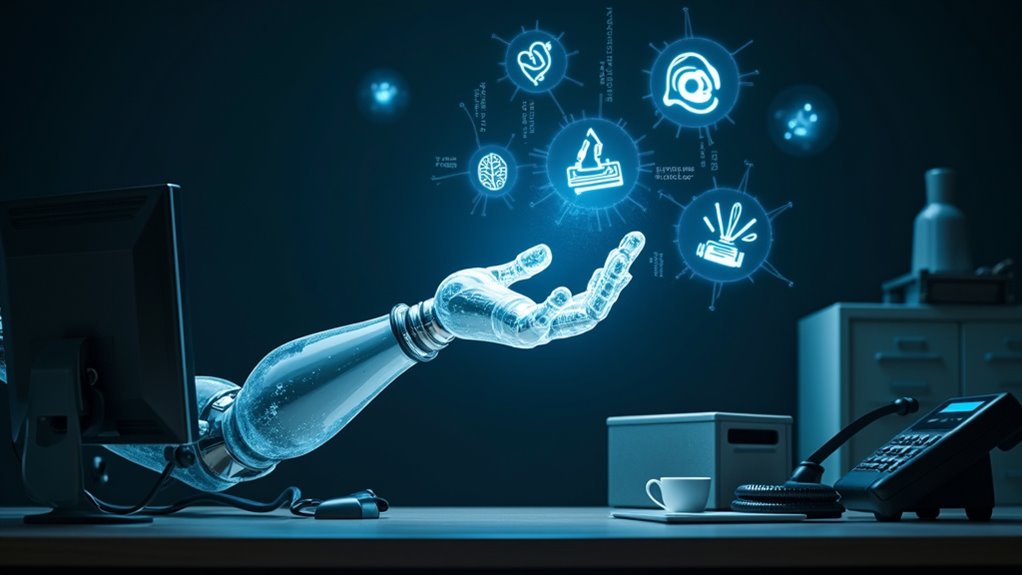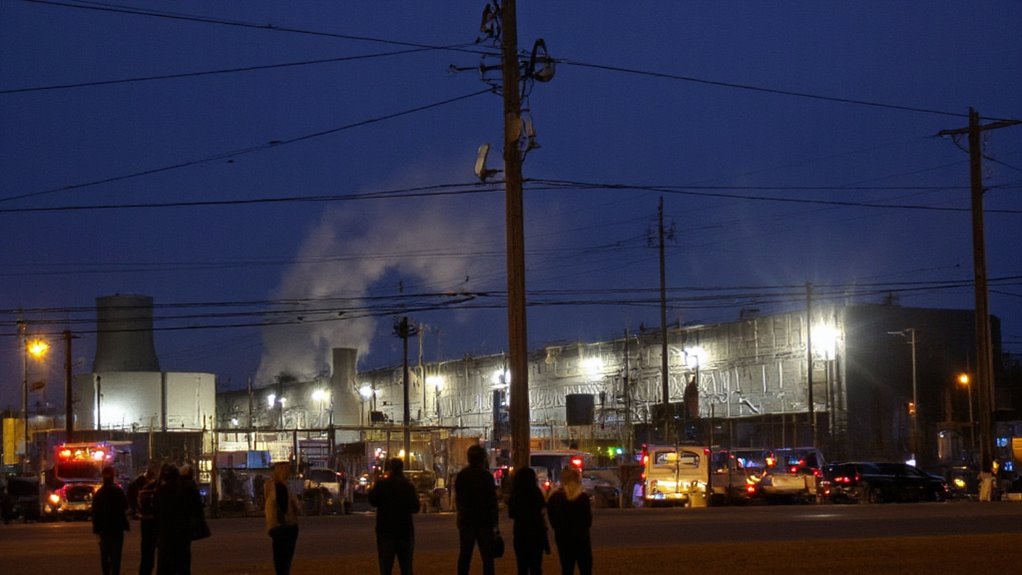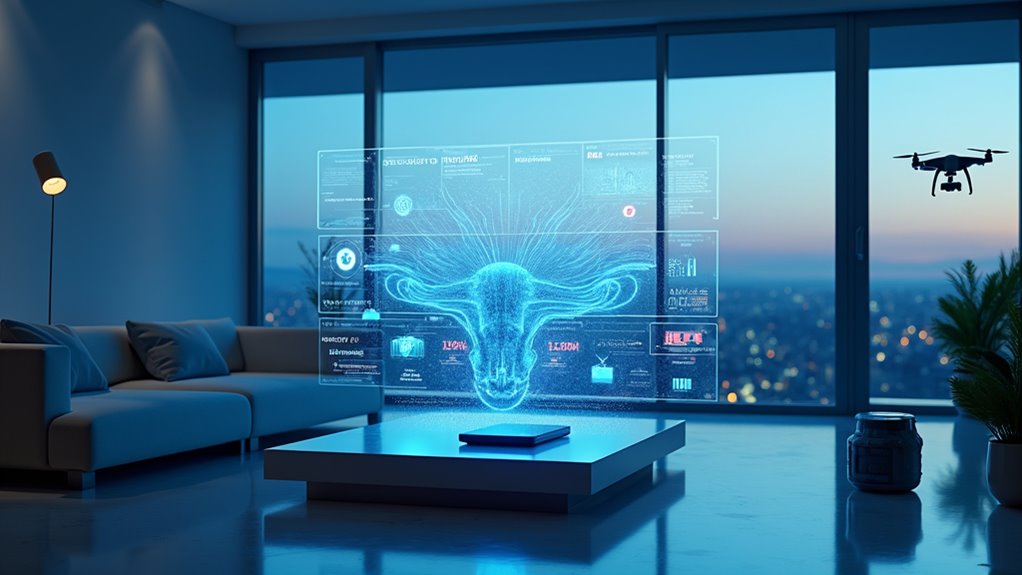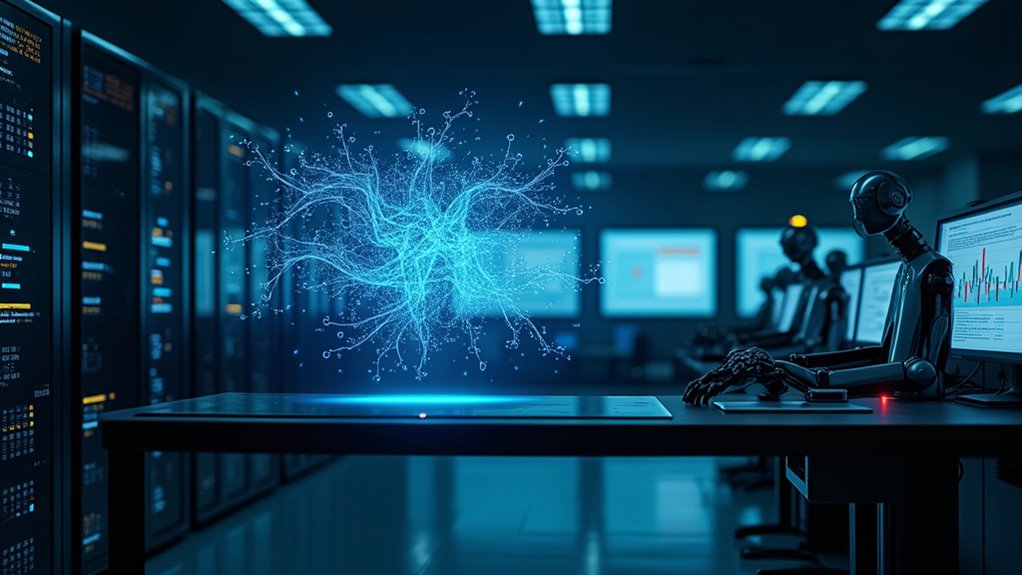While artificial intelligence continues to dazzle us with its capabilities, it’s gobbling up electricity like there’s no tomorrow. The numbers are staggering – AI data centers now consume more power than some entire countries. And here’s the kicker: a single ChatGPT query uses way more juice than your average Google search. Not exactly what you’d call environmentally friendly.
The carbon footprint? Don’t even get us started. Training these massive AI models produces emissions equivalent to years of personal carbon output. Recent studies show that inference phase now accounts for most of AI’s energy consumption. Water usage, e-waste, emissions – the environmental impact is piling up faster than discarded smartphones. By 2030, data centers alone could consume up to 20% of global electricity.
Training AI models spews out more carbon than you’ll generate in years, while guzzling water and creating mountains of e-waste.
And guess what? It’s about to get worse. By 2027, AI’s energy consumption is expected to more than double. Talk about a power-hungry beast.
But here’s where things get interesting. Scientists are turning to an unlikely source for solutions: the human brain. It turns out our gray matter is incredibly efficient at processing information. Some clever folks are designing AI systems that mimic the brain’s architecture, and the results are promising. The quest for efficiency has led to pre-trained models that significantly reduce the energy needed for AI development.
Companies like Numenta are showing that brain-inspired AI can slash energy use without sacrificing performance. Who knew copying nature could be so smart?
The tech world isn’t sitting idle, either. New hardware solutions are popping up like mushrooms after rain – neuromorphic chips, optical processors, and AI-specific accelerators that make traditional GPUs look like energy hogs.
Plus, there’s a big push to power AI with renewable energy. Some data centers are being built right next to solar and wind farms. Smart move.
Research institutions are working overtime to assess and fix AI’s carbon problem. Governments are even stepping in, slapping regulations on data center capacity.
It’s not all doom and gloom, though. Between optimizing AI models, developing domain-specific solutions, and embracing renewable energy, the industry is finally getting serious about going green.
Maybe, just maybe, we can have our AI cake and eat it too – without frying the planet in the process.






